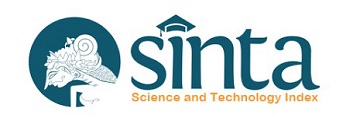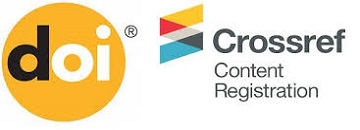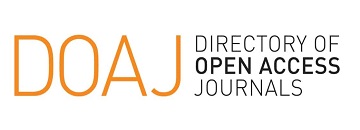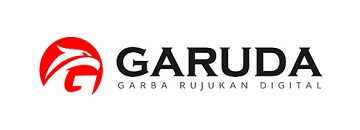Efforts to improve ecotourism management for bekantan conservation from visitors' perspectives: a case study in Balikpapan East Kalimantan
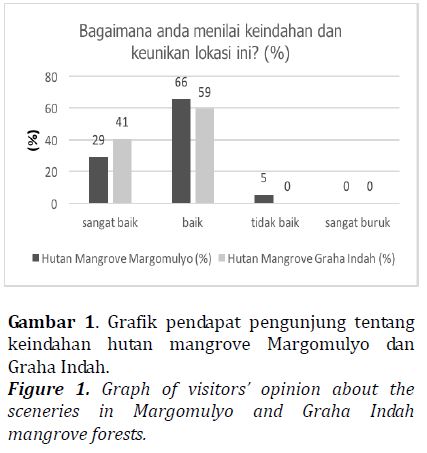
Downloads
Downloads
Abdi, N. (2015). Mangrove Center dirambah hingga 2 hektare. antaranews.com.Retrieved from https://www.antaranews.com/berita/472031/mangrove-center-dirambah-hingga-2-hektareDiakses tanggal 2 Juni 2018.
Asosiasi Penyelenggara Jasa Internet Indonesia. (2017). Infografis Penetrasi dan Perilaku Pengguna Internet Indonesia. Retrieved from Indonesia: http://www.teknopreneur.com/Diakses tanggal 8 Mei 2018.
Atmoko, T., & Sidiyasa, K. (2008). Karakteristik vegetasi habitat bekantan (Nasalis larvatus Wurmb) di Delta Mahakam, Kalimantan Timur. Jurnal Penelitian Hutan dan Konservasi Alam, 5(4), 307-316.
Bakar, N. A. A., Radam, A., Samdin, Z., & Yacob, M. R. (2016). Willingness to Pay in Kubah National Park and Matang Wildlife Centre : A Contingent Valuation Method. International Journal of Business and Society, 17(1), 131.
Ballantyne, R., Packer, J., & Hughes, K. (2009). Tourists' support for conservation messages and sustainable management practices in wildlife tourism experiences. Tourism management, 30(5), 658-664.
Chen, L.-C., Lin, S.-P., & Kuo, C.-M. (2013). Rural tourism: Marketing strategies for the bed and breakfast industry in Taiwan. International Journal of Hospitality Management, 32, 278-286.
Cheng, M., Wong, I. A., Wearing, S., & McDonald, M. (2017). Ecotourism social media initiatives in China. Journal of sustainable tourism, 25(3), 416-432.
Correia, A., Zins, A. H., & Silva, F. (2015). Why do tourists persist in visiting the same destination? Tourism Economics, 21(1), 205-221.
Eshetu, A. A. (2014). Development of community based ecotourism in Borena-Saynt National Park, North central Ethiopia: opportunities and challenges. Journal of Hospitality Management and Tourism, 5(1), 1-12.
Etikan, I., Musa, S. A., & Alkassim, R. S. (2016). Comparison of convenience sampling and purposive sampling. American Journal of Theoretical and Applied Statistics, 5(1), 1-4.
Gelcich, S., Amar, F., Valdebenito, A., Castilla, J. C., Fernandez, M., Godoy, C., & Biggs, D. (2013). Financing marine protected areas through visitor fees: Insights from tourists willingness to pay in Chile. Ambio, 42(8), 975-984.
Hamilton, S. E., & Casey, D. (2016). Creation of a high spatio‐temporal resolution global database of continuous mangrove forest cover for the 21st century (CGMFC‐21). Global Ecology and Biogeography, 25(6),729-738.
Hanemann, W. M. (1994). Valuing the environment through contingent valuation. The Journal of Economic Perspectives, 8(4), 19-43.
Haruna. (2011). Pengembangan Daya Tarik Burung Maleo (Macrocephalon maleo) Sebagai Obyek Ekowisata di Saluki TN LoreLindu Sulawesi Tengah.(Thesis), Universitas Gadjah Mada, Yogyakarta.
Hays, S., Page, S. J., & Buhalis, D. (2013). Social media as a destination marketing tool: its use by national tourism organisations. Current Issues in Tourism, 16(3), 211-239.
Howard, P., & Julie, P. (2007). Access to marine parks: A comparative study in willingness to pay. Ocean & Coastal Management, 52, 219-228.
Kementerian Pariwisata. (2014). Statistik Profil Wisatawan Nusantara Retrieved from Jakarta: http://www.kemenpar.go.id/userfiles/Wisnus 2014.pdf
Kementerian Pariwisata, & Badan Pusat Statistik. (2016). Statistik Profil Wisatawan Nusantara. Retrieved from Jakarta: http://www.kemenpar.go.id/userfiles/Statistik Profil Wisatawan Nusantara Tahun 2016_2(1).pdf
Krüger, O. (2005). The role of ecotourism in conservation: panacea or Pandora’s box? Biodiversity & Conservation, 14(3), 579-600.
Kurniawati, R. Y. (2018). Valuasi Ekonomi Pengembangan Objek Wisata Hutan Mangrove Kabupaten Brebes.(Undergraduate Thesis), Universitas Diponegoro, Semarang, Indonesia.
Lee, T. H. (2009). A structural model to examine how destination image, attitude, and motivation affect the future behavior of tourists. Leisure Sciences, 31(3), 215-236.
Leung, D., Law, R., Van Hoof, H., & Buhalis, D. (2013). Social media in tourism and hospitality: A literature review. Journal of travel & tourism marketing, 30(1-2), 3-22.
Mariani, M. M., Di Felice, M., & Mura, M. (2016). Facebook as a destination marketing tool: Evidence from Italian regional Destination Management Organizations. Tourism management, 54, 321-343.
Mukhlisi, M. (2017). Potensi Pengembangan Ekowisata Mangrove Di Kampung Tanjung Batu, Kecamatan Pulau Derawan, Kabupaten Berau (Potential Development of Mangrove Ecotourism in Tanjung Batu Village, Derawan Island District, Berau Regency). Jurnal Manusia dan Lingkungan, 24(1), 23-30.
Murdiyarso, D., Purbopuspito, J., Kauffman, J. B., Warren, M. W., Sasmito, S. D., Donato, D. C., . . . Kurnianto, S. (2015). The potential of Indonesian mangrove forests for global climate change mitigation. Nature Climate Change, 5(12), 1089.
Newsbalikpapan.com. (2014). Mangrove Terakhir Balikpapan. Retrieved from http://newsbalikpapan.com/mangrove-terakhir-balikpapan.htmlDiakses 8 Mei 2018
Noorhidayah, N., Sidiyasa, K., & Ma’ruf, A. (2007). Struktur dan Komposisi Vegetasi Habitat Bekantan (Nasalis larvatus Wurmb.) pada Hutan Mangrove di Bagian Hilir Sungai Wain Kalimantan Timur. Jurnal Penelitian Hutan dan Konservasi Alam, 4(2), 107-116.
Nurita, N., Mulatsih, S., & Ekayani, M. (2015). Wisata Alam Berbasis Masyarakat Sebagai Upaya PelestarianPenyu di Pantai Temajuk Kawasan Perbatasan Kalimantan Barat. Risalah Kebijakan Pertanian dan Lingkungan, 2(3), 254-262.
Peake, S., Innes, P., & Dyer, P. (2009). Ecotourism and conservation: factors influencing effective conservation messages. Journal of sustainable tourism, 17(1), 107-127.
Pereira, E. M., & Mykletun, R. J. (2012). Guides as contributors to sustainable tourism? A case study from the Amazon. Scandinavian Journal of Hospitality and Tourism, 12(1), 74-94.
Pieter, J., Benu, F., & Kaho, M. R. (2015). Valuasi Ekonomi Ekowisata terhadap Pengembangan Objek Wisata Kawasan Pesisir Pantai (Studi Kasus Jasa Lingkungan Non-Market Sumberdaya Alam Objek Wisata Pesisir Pantai Lasiana Kecamatan Kelapa Lima Kota Kupang–Provinsi NTT). Jurnal Ilmu Lingkungan, 13(1), 55-64.
Powell, R. B., & Ham, S. H. (2008). Can ecotourism interpretation really lead to pro-conservation knowledge, attitudes and behaviour? Evidence from theGalapagos Islands. Journal of sustainable tourism, 16(4), 467-489.
PPE Kalimantan. (2012). Ekowisata Mangrove Margomulyo. Berita Duta LH.Retrieved from http://kalimantan.menlh.go.id/v2/index.php/public/info/detail/duta/334
Prasetyo, L. B., & Kartono, A. P. (2015). Kesesuaian Habitat Bekantan (Nasalis Larvatus Wurmb) Di Hutan Mangrove Taman Nasional Kutai.(Thesis), Institut Pertanian Bogor, Bogor, Indonesia.
Purnamasari, R., Suprapto, D., & Purwanti, F. (2015). Pengembangan Ekowisata Mangrove Desa Karangsong, Kabupaten Indramayu. Management of Aquatic Resources Journal, 4(4), 146-154.
Rabiati, M. (2016). Strategi Restorasi Habitat Bekantan Di Suaka Margasatwa Kuala Lupak Berdasarkan Karakteristik Habitat Referensi.(Thesis), Institut Pertanian Bogor, Bogor, Indonesia.
Riasi, A., & Pourmiri, S. (2015). Effects of online marketing on Iranian ecotourism industry: Economic, sociological, and cultural aspects. Management Science Letters, 5(10), 915-926.
Rohman, F., Ghofar, A., & Saputra, S. W. (2016). Partisipasi Masyarakat Dalam Pengembangan Kawasan Ekowisata Di Desa Bedono Kecamatan Sayung Kabupaten Demak. Management of Aquatic Resources Journal, 5(2), 61-69.
Rukmiyati, S., Made, N., & Suastini, N. M. (2016). Dampak media sosial terhadap perilaku wisatawan.Paper presented at the "Conference on Management and Behavioural Studies", 27 Oktober 2016, Jakarta, Indonesia.
Sayangbatti, D. P., & Baiquni, M. (2012). Motivasi dan PersepsiWisatawan Tentang Daya Tarik Destinasi Terhadap Minat Kunjungan Kembali di Kota Wisata Batu. Jurnal Nasional Pariwisata, 5(2), 126-136.
Stankov, U., Lazic, L., & Dragicevic, V. (2010). The extent of use of basic Facebook user-generated content by the national tourism organizations in Europe. European Journal of Tourism Research, 3(2), 105-113.
Stronza, A., & Pegas, F. (2008). Ecotourism and conservation: Two cases from Brazil and Peru. Human Dimensions of Wildlife, 13(4), 263-279.
Suja, I. K., & Budiarta, I. P. (2015). Total Economic Value Destinasi Wisata Nusa Lembongan dalam Pembangunan Pariwisata Berkelanjutan Berwawasan Lingkungan. Soshum: Jurnal Sosial dan Humaniora, 5(1), 1.
Supitchayangkool, S. (2012). The differences between satisfied/dissatisfied tourists towards service quality and revisiting Pattaya, Thailand. International Journal of Business and Management, 7(6), 30.
Utama, I. G. B. R. (2016). Keunikan Budaya Dan Keindahan Alam Sebagai Citra Destinasi Bali Menurut Wisatawan Australia Lanjut Usia (The Uniqueness of Culture and Natural Beauty as Images of Bali Destination According to the Australian Senior Tourist). Jurnal Kajian Bali, 06(01), 149-172.
Van Beukering, P., Brander, L., Tompkins, E., & McKenzie, E. (2007). Valuingthe Environment in Small Islands: An Environmental Economics Toolkit. Peterborough, UK: Joint Nature Conservation Committee.
Wang, P.-W., & Jia, J.-B. (2012). Tourists’ willingness to pay for biodiversity conservation and environment protection, Dalai Lake protected area: Implications for entrance fee and sustainable management. Ocean & Coastal Management, 62, 24-33.
Wiradiputra, F. A., & Brahmanto, E. (2016). Analisis persepsi wisatawan mengenai penurunan kualitas daya tarik wisata terhadap minat berkunjung. Jurnal Pariwisata, 3(2), 129-137.
Yamada, N. (2011). Why tour guiding is important for ecotourism: Enhancing guiding quality with the ecotourism promotion policy in Japan. Asia Pacific Journal of Tourism Research, 16(2), 139-152.



